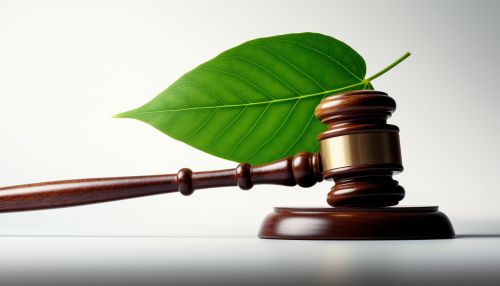Environmental law
Introduction
Environmental law is a collective term encompassing aspects of the law that provide protection to the environment. A related but distinct set of regulatory regimes, now strongly influenced by environmental legal principles, focus on the management of specific natural resources, such as forests, minerals, or fisheries. Other areas, such as environmental impact assessment, may not fit neatly into either category, but are nonetheless important components of environmental law.
History
The origins of environmental law date back to the earliest civilizations. In the ancient Middle East, the earliest known legal protection of the environment was the Code of Hammurabi which established protection for some aspects of the environment, but it was not until the early 20th century that environmental law became a separate and serious discipline. The first laws on pollution were introduced in 19th century Britain, after the Industrial Revolution, and in the mid-20th century, in the United States, the first EPA was created in 1970.
Principles of Environmental Law
Environmental law is a complex mix of federal, state, and local laws, regulations, policy choices, science, and health considerations. It is a branch of law that involves issues of constitutional law, administrative law, property law, tort law, and insurance law. Environmental law involves legal standards that directly or indirectly protect or regulate the use of the natural environment, whether land, water, air, minerals, plants, animals, and human physical environment.


The principles of environmental law are based on policies that aim to conserve natural resources and the existing natural environment and, where possible, to repair damage and reverse trends. These principles include:
1. The principle of sustainable development: This principle aims to ensure that development meets the needs of the present without compromising the ability of future generations to meet their own needs.
2. The precautionary principle: This principle allows policy makers to make discretionary decisions in situations where there is the possibility of harm from making a certain decision (e.g. taking a particular course of action) when extensive scientific knowledge on the matter is lacking.
3. The polluter pays principle: This principle is the commonly accepted practice that those who produce pollution should bear the costs of managing it to prevent damage to human health or the environment.
4. The principle of environmental justice: This principle demands that no group of people, including racial, ethnic, or socioeconomic groups, should bear a disproportionate share of the negative environmental consequences resulting from industrial, municipal, and commercial operations or the execution of federal, state, local, and tribal programs and policies.
Environmental Legislation
Environmental legislation is a collection of many laws and regulations aimed at protecting the environment from harmful actions. It also includes laws that provide for the legal use of natural resources. These laws are designed to control pollution and to protect the natural environment. They can take many forms and may vary widely across nations and states.
Environmental legislation can be divided into two main categories: pollution control and remediation, and resource conservation and management. The first category includes laws designed to limit the release of substances into the environment. The second category includes laws designed to manage and conserve natural resources such as land, water, minerals, plants and animals.
Environmental Law and Policy
Environmental policy refers to the commitment of an organization to the laws, regulations, and other policy mechanisms concerning environmental issues. These issues generally include air and water pollution, waste management, ecosystem management, maintenance of biodiversity, the protection of natural resources, wildlife and endangered species. Policies concerning energy or regulation of toxic substances including pesticides and many types of industrial waste are part of the topic of environmental policy. This policy can be deliberately taken to direct and oversee human activities and thereby prevent harmful effects on the biophysical environment and natural resources, as well as to ensure that changes in the environment do not have harmful effects on humans.
Environmental Law Enforcement
Enforcement of environmental law is a critical element to protecting the environment. This can be achieved through a variety of mechanisms, including command and control regulation, self-regulation, private litigation, and lobbying groups. Command and control regulation is the most common mechanism of enforcement, although the use of market mechanisms is growing. Self-regulation is another regulatory instrument, where an industry or group of industries develops rules and regulations that they commit to follow, often after negotiation with governmental authorities. Private litigation is another mechanism, where private parties bring lawsuits to enforce statutes or common law principles.
Challenges and Critiques
Environmental law has been criticized for its complexity, cost and lack of focus on results. Some critics argue that environmental law is driven by politics rather than science, and that it is overly bureaucratic, inefficient and slow to respond to new issues. Others argue that environmental law does not go far enough to protect the environment, and that more radical approaches are needed.
